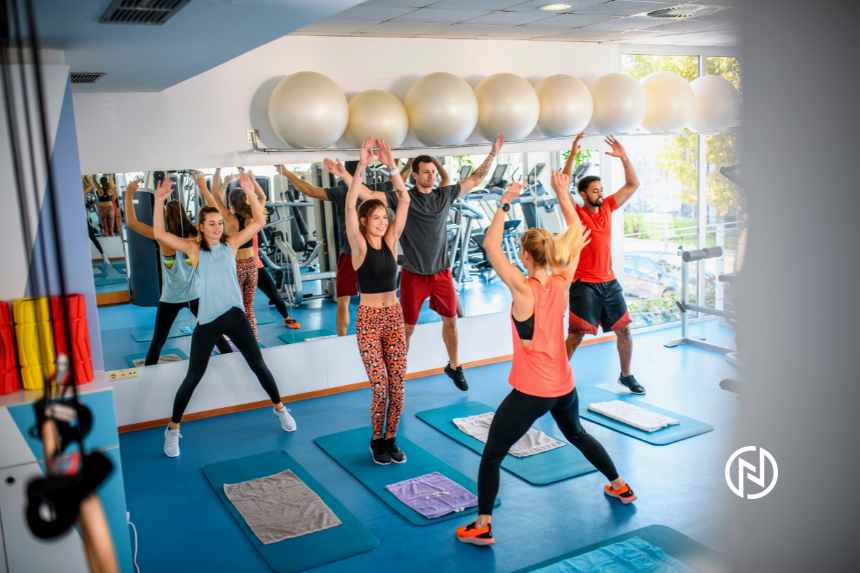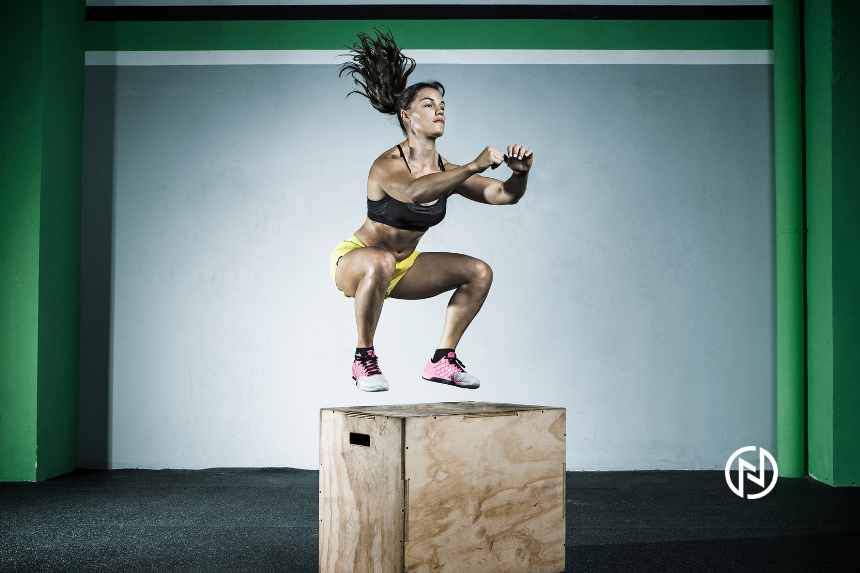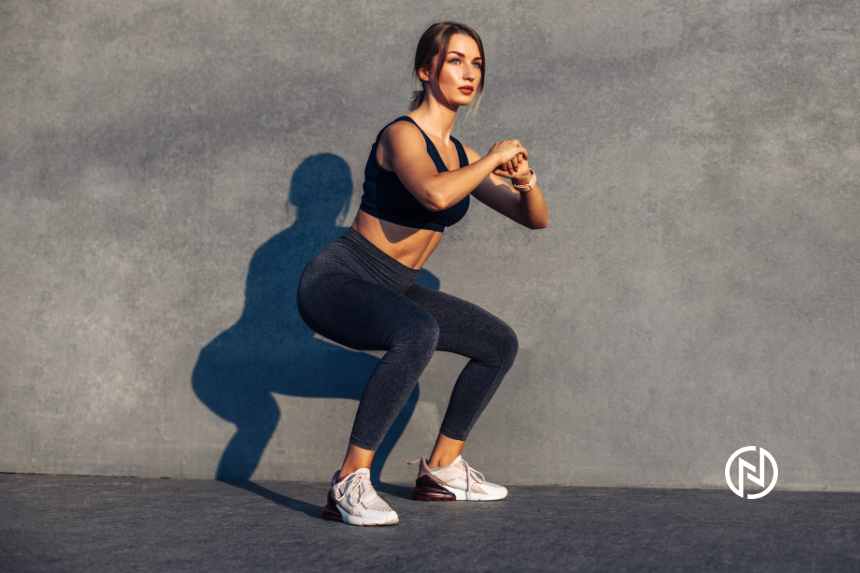We are going through an era where life has become so busy and challenging that we don’t find time for ourselves and our health. We know the importance of exercise in our life; still, we can’t find time for them. While doing 9 to 5 jobs, picking kids from school, caring for friends and relatives, and cooking nutritious meals, something gets ignored.
What’s that? – Our health! Fortunately, there are some clever techniques called cardio that save us a few minutes from our busy schedule and let us build up good health. Here it goes.
Cardiovascular exercises or cardio, in short, comprises those exercises that stimulate and strengthen the heart, build up blood vessels, balance the heartbeat rate, and make you feel energized. Cardio comes with a bag of benefits with very little effort. Here are some of these exercises.
Jumping Jack

Jumping Jack is one of the easiest and the most convenient cardio exercises. It’s easy to include it in almost all the workout plans. Jumping Jack is like a halt between difficult moves. It warms you up and makes you feel fresh.
Place your feet together and hand at sides. Start jumping with legs spread apart and arms must go overhead clapping at the top. Make sure that you bend your knees while jumping. Repeat this exercise 6 to 10 times.
Jumping jacks, also known as star jumps, are a simple yet effective cardiovascular exercise that can provide a number of health benefits.
- Cardiovascular fitness: Jumping jacks are a great way to get your heart pumping and improve cardiovascular fitness. They are considered a cardio exercise, which means they can help improve the health of your heart and lungs.
- Weight loss: Jumping jacks are a high-energy exercise that can burn a significant amount of calories, making them an effective way to lose weight and tone your body.
- Full-body workout: Jumping jacks work the legs, arms, shoulders, and core, making them a great full-body workout.
- Stress relief: Jumping jacks can also help relieve stress and tension in the body, as the jumping motion can stimulate the release of endorphins, which are natural mood-boosters.
- Improve coordination: Jumping jacks require coordination and balance, so they can help improve your coordination and balance over time.
- Easy to do: Jumping jacks are very easy to do and can be done anywhere, anytime, and with no equipment.
It’s important to note that jumping jacks are a high-impact exercise and people with joint issues or injuries should consult a doctor before trying them.
Box Jump

For this exercise, you need a box of mid-calf height. Stand upright in front of the box. The distance between your feet must be that of the shoulders. Now move your arms in a pendulum motion. Bend your knees, send your hips back, and finally jump into the box. Land softly onto it with your toes. Now step back with one leg at a time. Repeat this process.
Box jumps are a plyometric exercise that involve jumping onto and off of a raised platform, typically a box or bench. They are often used as a conditioning exercise in sports, and are a popular addition to many functional fitness and high-intensity interval training (HIIT) workouts.
- Leg strength: Box jumps are a great way to build leg strength, particularly in the quadriceps, hamstrings, and glutes.
- Explosive power: Box jumps are a plyometric exercise, which means they focus on power and explosiveness. These exercises are great for developing explosive power in the legs, which can be beneficial for sports and other activities that require quick, powerful movements.
- Cardiovascular fitness: Box jumps are a high-intensity exercise, which means they can improve cardiovascular fitness and endurance.
- Core strength: Box jumps also work the core muscles, as you need to maintain balance and stability when jumping onto and off of the box.
- Plyometric exercise: Box jumps are a plyometric exercise, which means that they are designed to increase power, speed, and explosiveness in the muscles.
- Easy to modify: Box jumps can be modified easily to accommodate different fitness levels and abilities by adjusting the height of the box, the number of reps, or the rest time.
It’s important to note that box jumps are a high-impact exercise and people with joint issues or injuries should consult a doctor before trying them. Also, proper form is important to avoid injury and make the most of the exercise.
Commute Workout

This is one of the easiest cardio that gets done even without being noticed. If you are a working person and go to your workplace via car or other means of transport, just drop it out. Instead, you can go there by cycling, jogging or walking. What you need to do is to choose the safest route which must be less time-consuming at the same time.
Commuting can be a great opportunity to squeeze in a workout and improve your health. There are a few benefits to incorporating a commute workout into your daily routine:
- Convenience: Commute workouts can be done at any time, without the need for a gym membership or equipment. They are also a great option for people who have busy schedules and can’t make it to the gym.
- Cost-effective: Commute workouts are typically free and don’t require any special equipment, making them a cost-effective way to stay in shape.
- Time-efficient: Commute workouts can be done while you’re on the way to work or school, meaning you don’t have to spend extra time working out.
- Stress relief: Commute workouts can help to relieve stress and tension, which can be beneficial for people who have a long or difficult commute.
- Cardiovascular fitness: Commute workouts, such as cycling or running, are a great way to improve cardiovascular fitness and endurance.
- Increased energy levels: Commute workouts can also increase energy levels, making you feel more alert and productive throughout the day.
It’s important to note that if you’re cycling or running, you should wear appropriate gear and pay attention to traffic safety. Also, make sure to start with small, easy exercises and gradually increase the intensity of the workout as you become more comfortable and confident.
Stability Ball

Sitting on a stability ball strengthens your abdominal muscles and provides you relaxation. According to a study, working while sitting on a stability ball, lets you be more concentrated on work. It also lets your spines gain proper posture. You need to just replace your working chair with the stability ball.
Stability balls, also known as exercise balls or Swiss balls, are large inflatable balls that can be used for a variety of exercises to improve strength, balance, and stability.
Some benefits of stability ball workouts include:
- Core strength: Stability ball exercises are great for strengthening the core muscles, including the abdominal muscles, back muscles, and hips.
- Balance and stability: Stability ball exercises require balance and stability, which can help to improve balance and stability in everyday activities.
- Flexibility: Stability ball exercises can also improve flexibility, particularly in the spine and hips.
- Variety of exercises: Stability balls can be used for a wide range of exercises, including strength training, cardio, and stretching, making it a versatile workout tool
- Low impact: Stability ball exercises are typically low-impact, making them a good option for people who have joint pain or other injuries.
- Cost-effective: Stability balls are relatively inexpensive and don’t take up much space, making them a cost-effective workout option.
It’s important to note that before using the stability ball for exercises, you should make sure it is properly inflated and the right size for you. Also, make sure to use proper form when performing exercises on the stability ball to avoid injury.
Squat Jump

Squat jump is one of the easiest warm-ups. Place your feet shoulder-width apart and squat down. Stretch your arms and raise up slowly jumping in a leaping motion. Land smoothly on the toes of your feet. Return to the squat position and repeat this process 6 to 8 times.
Squat jumps are a plyometric exercise that involve jumping explosively from a squatting position. They are a high-intensity, full-body exercise that can provide a number of benefits, including:
- Leg strength: Squat jumps are a great way to build leg strength, particularly in the quadriceps, hamstrings, and glutes. They also help to improve muscle endurance.
- Explosive power: Squat jumps are a plyometric exercise, which means they focus on power and explosiveness. These exercises are great for developing explosive power in the legs, which can be beneficial for sports and other activities that require quick, powerful movements.
- Cardiovascular fitness: Squat jumps are a high-intensity exercise, which means they can improve cardiovascular fitness and endurance.
- Core strength: Squat jumps also work the core muscles, as you need to maintain balance and stability when jumping.
- Improves balance: Squat jumps require balance and stability, which can help to improve balance and stability in everyday activities.
- Easy to modify: Squat jumps can be modified easily to accommodate different fitness levels and abilities by adjusting the height of the jump, the number of reps, or the rest time.
It’s important to note that squat jumps are a high-impact exercise and people with joint issues or injuries should consult a doctor before trying them. Also, proper form is important to avoid injury and make the most of the exercise. Start with smaller jumps and gradually increase the height as you become more comfortable with the movement.
High Knees

Stand straight with legs hip-width apart. Get your knees towards your chest at the same height. Start running with alternate legs as fast as possible. This exercise immediately warms you up and alleviates muscles and joint pain.
High knees is a cardio exercise that involves running in place and lifting your knees as high as possible.
Here are some benefits of high knees:
- Cardiovascular fitness: High knees is a cardio exercise that can improve cardiovascular fitness and endurance by getting your heart rate up.
- Leg strength: High knees works the leg muscles, including the quadriceps, hamstrings, and glutes, which can help to build leg strength.
- Improves coordination: High knees requires coordination and balance, which can help to improve coordination and balance over time.
- Fat Burning: High knees is a high-intensity exercise that can burn a significant amount of calories, making it an effective way to lose weight and tone your body.
- Stress relief: High knees can also help relieve stress and tension in the body, as the high knees motion can stimulate the release of endorphins, which are natural mood-boosters.
- Easy to do: High knees are very easy to do and can be done anywhere, anytime, and with no equipment.
It’s important to note that high knees is a high-impact exercise and people with joint issues or injuries should consult a doctor before trying them. Also, proper form is important to avoid injury and make the most of the exercise.
Pacing Around

Why use analyze your files in the office or read novels or talk on the phone, start pacing around. It will help the circulation of blood in vessels and proper expansion and contraction of muscles.
Cardiovascular exercises are easy to handle and perform even without sparing extra time from your busy schedule. They warm you up, increase metabolism, ensure fast recovery and lessen the risk of several diseases.
Pacing around, also known as fidgeting, is the act of moving around or shifting your weight from one foot to another while standing or sitting. While it may seem insignificant, pacing around has been shown to have some benefits, such as:
- Improves focus: Pacing around can improve focus and concentration, as it allows for a release of pent-up energy and can help clear the mind.
- Increases energy: Pacing around can also increase energy levels, as it gets the blood flowing and can help to combat feelings of fatigue.
- Boosts creativity: Pacing around can also boost creativity, as it allows the mind to wander and can help to generate new ideas.
- Burns calories: Pacing around can also help to burn calories, as it is a form of light physical activity, although it is not as effective as intense exercise.
- Improves mood: Pacing around can also help to improve mood and reduce feelings of stress and anxiety, as it can stimulate the release of endorphins, which are natural mood-boosters.
It’s important to note that pacing around should not be used as a substitute for regular exercise, and that some situations such as in a meeting or a class, it’s not appropriate. Also, it’s important to be aware of the space around you and the people around you when pacing around, to avoid any inconvenience or accidents.
Good Luck! Be Happy!












